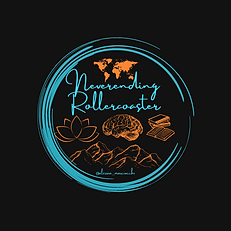Doing Mode and Being Mode
- Alessia Masciocchi
- Jan 10
- 3 min read
Hello beautiful people!
Today we'll delve a bit deeper into the world of Mindfulness by distinguishing when we are in doing mode and when we are in being mode.
Why isn't being in "doing" mode good?
The doing mode, meaning acting without being consciously and attentively present, becomes a huge impediment: it transports us away from our being and, bitterly, often transforms into a real escape route. Mindfulness helps us transition from doing to being, as written above, through attention and awareness
The Seven Characteristics of Doing:
Autopilot
We act through automatisms without realizing it
Analyzing
Our brain performs the incessant activity of planning, remembering, and analyzing things, which absorbs us and makes us live in thoughts, thus losing contact with both ourselves and the reality around us
Fighting
That is, judging, seeing reality and comparing it with how we would like it to be. The risk is falling into the trap of a tunnel
Seeing thoughts as real and concrete
This means confusing what's inside us with what's outside
Avoiding
Keeping objectives in mind, even ones to avoid: good for material things, but not for the psyche as it increases cortisol
Being "elsewhere"
The mind moves restlessly between past and future without ever dwelling on the present: stress increases
Living through energy-draining activities
These are activities that "empty" us and where we set ourselves big goals that we then procrastinate on
The Seven Characteristics of Being:
If we decide to live mindfully and attentively, the previous characteristics will gradually fade away to consolidate new ones (in order):
Acting consciously
Being fully aware of our path, becoming capable of aligning actions with intentions
Perceiving
Reconnecting with our senses, never taking anything for granted or as already known. We must live with curiosity and perceive what happens and take care of it
Accepting
Living without entering into judgment, thus accepting things as they are without resignation. Living this acceptance with control can allow us to choose and clearly see objectives
Thoughts as mental events
It's very important to reach the awareness that thoughts are just mental events and not reality: this is perhaps the most important principle of Mindfulness. Thoughts should be seen as they are and true reality is what's visible
Meeting
We must observe with an empathetic approach what we want to avoid. This dissolves negative moods
Being "present"
It's based on clarity between past and future, being aware that thoughts are a fluid process and that there's no need to suffer for past or future pains
Living through nourishing activities
Energetically nourishing activities are what keep us going. It's important to balance activities and resources and understand what nurtures us and what consumes us
Consciously Changing Path
To escape the trap of "doing" and enter the freedom of being, we must learn to consciously recognize how we are living to choose the right path.
We are fortunate because by modifying even just one characteristic, the others automatically change.
Let's describe Mindfulness with adjectives:
Ordinary
Natural
Universal
Available
Practical
Why practical?
Because it's the right sense to understand what's important in our existence. It makes us live life as it is (making us accept it) and helps us avoid putting judgment and comparison first.
In conclusion, mindfulness invites us to move from a state of constant doing to a more balanced way of being. By recognizing these two modes and understanding their characteristics, we can consciously choose how we want to live each moment.
Remember that this isn't about perfection but awareness and gentle progression.
Each small step from 'doing' to 'being' is a victory, leading us toward a more present and fulfilling life.

Kommentare